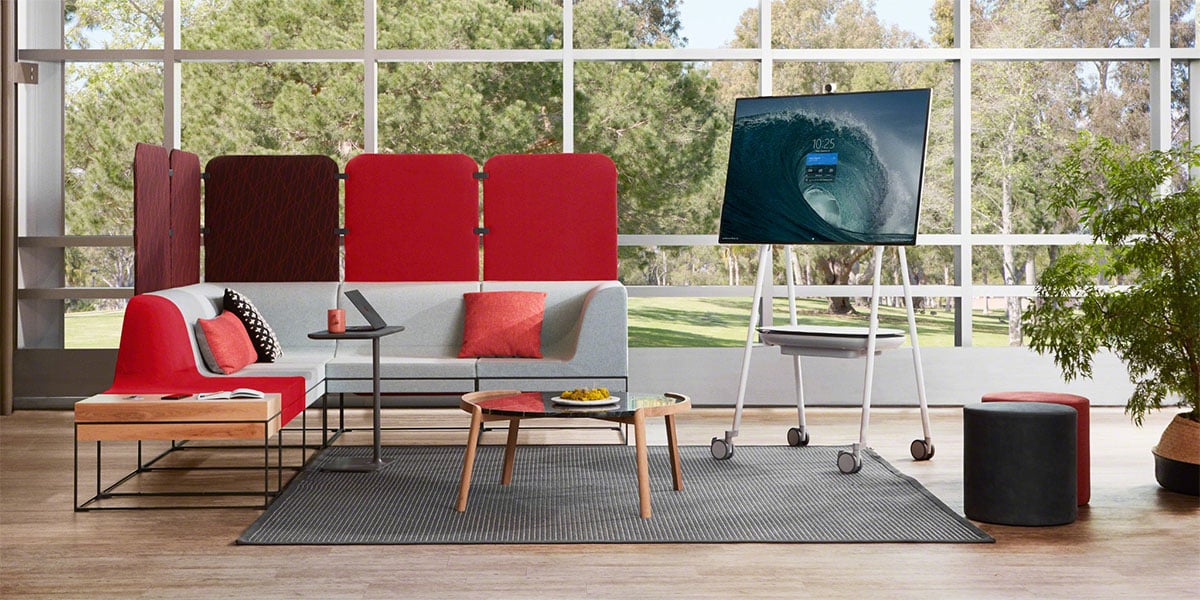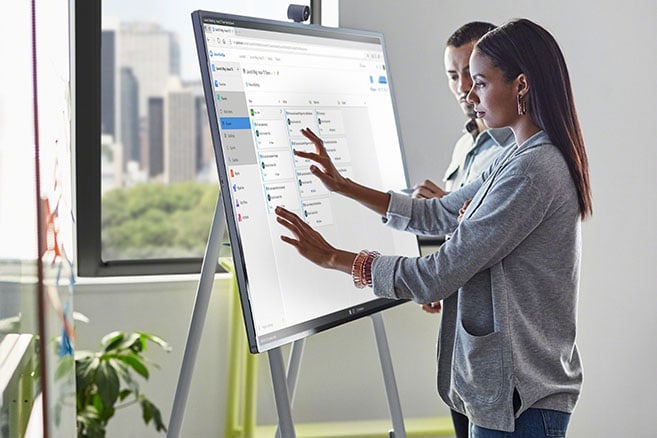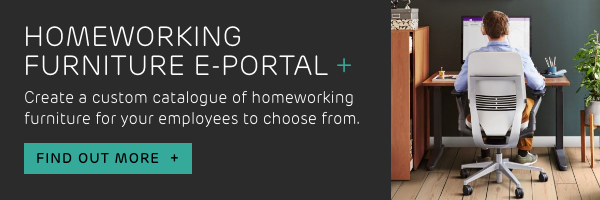Dispersed workforces are the future. But they face particular challenges in replicating the togetherness and productivity of those working from one place. How can businesses make the most of their phygital teams and spaces?
What is Phygital?
The phygital space is where the physical and digital worlds come together. And, thanks to Covid, it’s a space where many of us are living and working right now. But even before Covid the trend for blended physical and digital collaboration was growing.
Even so, many businesses still struggle to match the creative performance of co-located teams in those working virtually:
40% of respondents to one workplace study said that it is harder to get desired results from digital collaboration than from in-person engagements.
But now it’s an everyday reality for many workers, and likely to become a dominant theme in our professional lives for years to come, businesses need to adopt the strategies (and digital tools) to support increasingly mixed presence teams.
What are the obstacles to phygital success?
“When some people are in the room and others join remotely, remote participants tend to have to work a lot harder to see, be seen and be heard — a concept called presence disparity.”
Mixed presence teams often see an imbalance in the contribution made by those in the physical workspace and those ‘calling in’. Virtual participants can feel ignored or excluded from the creative energy of the real world office, while those in the office may feel remote participants are not fully present in the exchanges that are happening.
Fixed technology holds us back
Steelcase research points out that this is often a result of the technical limitations of a ‘fixed’ technology.
Static screens and camera combinations (often fixed to walls), mean virtual participants are tethered to one place and one view of the action.
Meanwhile, their presence in the room is limited to a small headshot that is further minimised when the screen is used to bring up materials such as spreadsheets, presentations and videos.
Those 'calling in' are at an immediate disadvantage when it comes to making a meaningful contribution to what is being discussed - and those ‘in the room’ are more likely to end up ignoring them.
This problem is now being exacerbated by another factor. Those who are in the office and participating in a virtual meeting as a group are also likely to be social distancing. This means they may be spread out in larger and more echoey spaces, presenting further challenges for remote participants to see and hear what is going on.
Three barriers to success of ‘mixed presence’ collaboration
Fixed technology represents real obstacles to the way virtual team members can contribute in collaborative sessions, and the way those ‘in the room’ consider and value their contribution:
- Difficulty seeing and engaging in content while also viewing remote participants’ faces.
- Remote participants struggling to enter conversations because they miss visual or verbal cues.
- Remote participants missing out on conversations before and after meetings.
This is having serious consequences for our ability to be cohesive and creative. In the worst case scenarios it is:
- Dampening the motivation to meet,
- Creating friction between virtual and co-located colleagues
- Leading to slower and less satisfying collaboration processes
- Stalling productivity
A shift of culture is needed
But a recent Steelcase experiment into mixed presence teams have found useful ideas emerging to counter the tendency to lose connection with those ‘not in the room’.
As Mike Pell a Microsoft Envisioneer, puts it following his recent participation in a blended Hackathon:
“I learned it’s not at all about the digital toolset, it’s about how the ingenuity and creativity of people make it work. There are lots of technical features available, but teams have to figure out how to be creative and develop habits and behaviors over time.
While technology remains incredibly important, switching our behaviours to include others and correct imbalances of attention can be a powerful force to make mixed presence collaboration work.
Here’s Mike Pell again:
“I saw one team working in Microsoft Teams tile view and the moderator said, “Write something on a piece of paper and hold it up.” That simple idea immediately equalized participation and illuminated a new way of collaborating.”
Meanwhile, colocated teams who started thinking more inclusively about their virtual colleagues began to see better collaborative results.
In the Hackathon that Steelcase observed, colleagues began to position lap tops so that screen contents could be shared better on the video conference. Others held smart phones up to the camera to illustrate specific points.
Supporting virtual teams
Teams need to be guided to keep 'virtual colleagues' in mind. Those moderating sessions should establish rules for more participation, ensuring those calling in are given equal access to the conversation.
Businesses can also support those dialling in by providing higher quality headsets and larger screens with better spec inbuilt cameras to those colleagues working virtually.
What tech can support this shift?
But a new breed of technology is also needed to address these challenges.
Monitors for video conferencing need to be removed from walls and made more mobile. They should be capable of being angled in any way to capture activity in a meeting space. Mobile partitions should be used to help with acoustics. Screens need to be large enough to show and share materials while keeping the faces of virtual participants present and prominent.
This technology will be more and more required for dispersed workforces
- Flat screen monitors on moveable ‘easels’
- Large flat screens to support virtual white boards
- Materials easily shared to whiteboards by all participants
- Meeting participants fully visible at all time
- Virtual whiteboards remain available after meetings are concluded

Ensuring dispersed workers can access, write and pin materials to virtual whiteboards in real time is an important part of an inclusive meeting. It is more than screen sharing, it is creating an accessible resource where stories can be built collaboratively in real time.
Is VR the answer?
But some are offering more radical solutions for the problem of 'presence disparity'. Switching to VR handsets as a way of conducting meetings can bring everyone into the same 'room' at the same time. It can instantly break down the distinction between those in the office and those calling in. For Anna Frazzetto (@AnnaFrazzetto) CTO of Nash Tech Global:
"VR will get you into the middle of the discussion with your team, where you can even whiteboard together. You can now easily have scrum meetings with teams from all over the world and still feel you are all present. You can collectively work on presentations and give client pitches. "
In the future where the environmental damage inflicted by commuting and frequent business flying is increasingly recognised, VR may well become the only acceptable way to conduct much of our corporate life.
We're not there yet, though. The technology is expensive and can work patchily. And many workers, particularly older generations may not be ready to embrace this kind of fully immersive tech.
Let's get Phygital
What we can do is lever more readily available technology to provide the best quality interaction for mixed presence teams. We need ensure those calling in are properly equipped to hear and be heard. We can redesign physical offices, position cameras and select the right software, so that virtual participants can see the whole team and all the materials being discussed. And we can take steps to change behaviours so that we extend our attention across the digital divide.










